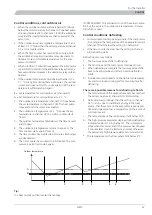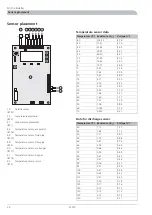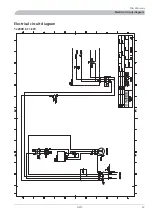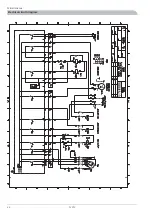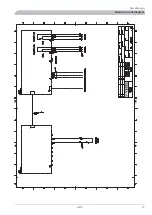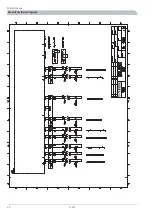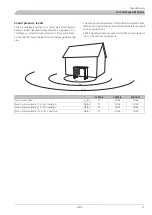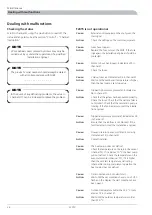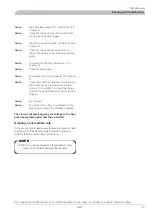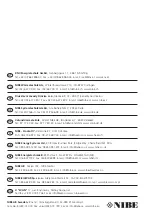
High flow temperature (T2). Indicated as 14 in
channel S1.
Cause:
Check the charge flow and the particle filter
which may be partially clogged.
Action:
High return temperature (T3). Indicated as 04 in
channel S1.
Cause:
Check the charge flow and note the com-
pressor’s limitations at low outdoor air temper-
atures.
Action:
Unsuccessful defrosting. Indicated as 15 in
channel S1.
Cause:
Check the charge flow.
Action:
Short operations times Indicated as 16 in channel
S1.
Cause:
Check the connection difference for the thermo-
stat. Check the start temperature hot water
(menu 1.1) in any SMO 10. Check the charge
flow and the particle filter which may be partially
clogged.
Action:
Fan stopped.
Cause:
Ensure that the air flow is not blocked. If the
fault remains contact the installation engineer.
Action:
The alarm is acknowledged by the voltage to the heat
pump being interrupted and then restarted.
Draining, heat medium side
In the event of prolonged power failures it is recommended
that the part of the heating system located outdoors is
drained. (See the section Pipe connections)
NOTE
As F2015 can be connected to a large number of ex-
ternal units, these should also be checked.
If the operating disturbance cannot be rectified by means of the above, an installation engineer should be called.
37
F2015
Miscellaneous
Dealing with malfunctions
Summary of Contents for F2015
Page 1: ...INSTALLATION AND MAINTENANCE INSTRUCTIONS MOS GB 1008 3 F2015 031239 F2015 LEK ...
Page 2: ......
Page 27: ...Electrical circuit diagram 1x230V 6 11 kW 25 F2015 Miscellaneous Electrical circuit diagram ...
Page 28: ...F2015 26 Miscellaneous Electrical circuit diagram ...
Page 29: ...27 F2015 Miscellaneous Electrical circuit diagram ...
Page 30: ...F2015 28 Miscellaneous Electrical circuit diagram ...
Page 40: ...F2015 38 ...
Page 41: ...39 F2015 ...
Page 42: ...F2015 40 ...
Page 43: ......

